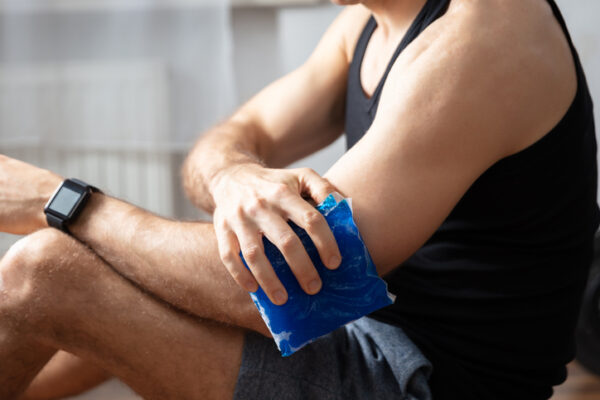
Ice or Heat?
A question our physical therapists get frequently asked is whether to use ice or heat to reduce muscle or joint pain.
Truth is, it depends. Ice is for injuries and after activity and heat is for loosening and relaxing tissues, used before activity.
While the suggestions below apply to most people, it is important to recognize that if you have certain conditions (such as fibromyalgia, Reflex Sympathetic Dystrophy (RSD), or rheumatoid arthritis), your sensory pathways are affected and don’t fall into the typical response patterns.
Ice is best used:
- In the first 24-48 hours after an injury. This period is known as the inflammatory period and can last up to 72 hours depending on the tissue injured. This is true even for simple sprains.
- After an activity, or at the end of the day when swelling is present.
- To control inflammation associated with chronic conditions like overuse injuries.
Ways to ice:
Icing is easy and most of us have done it at some point. The most common way being to place ice cubes in a plastic bag.
That said, the best way to ice at home is to take out a one-gallon zip lock bag. Add three cups of water and one cup of rubbing alcohol. Take out the air and put the bag inside another to avoid leakage, place in the freezer. It will become slushy but not hard frozen. Place this in a pillowcase (not a towel as is commonly done), and place on the injured area.
How long? Until the ice melts, then back into the freezer. Repeat as needed.
The gel packs that are commonly used can be dangerous. They are so cold that they can actually freeze the skin. If you use a gel pack, be sure that you do not put it directly on the skin.
Things to know about icing:
- Don’t ice for more than 20 minutes.
- Let your tissues fully warm up before re-icing.
- A good rule of thumb is 20 minutes on, 40 minutes off.
- If icing an area with superficial nerves (like the elbow), don’t ice for more than 10 minutes.
- Never ice before physical activity!
- Ice can aggravate symptoms of tightness and stiffness.
Heat is best used:
- Heat is typically used to help relax or loosen tissues.
- It works by encouraging blood flow to the area.
- Heat is commonly used in chronic conditions to improve blood flow.
- It can assist in loosening and relaxing muscles prior to exercise.
Ways to heat:
The most common way to use heat therapeutically is to use a heating pad. If you don’t have a heating pad, you can use a hot wet towel!
Things to know about heating:
- Avoid heating for long periods.
- Don’t use heat when sleeping to avoid burns.
- Heat can make inflammation significantly worse.
If you’re been struggling with pain, try using ice or heat as a source of relief.
Please don’t hesitate to contact us if your symptoms persist as it may be indicative of a more serious condition.
Did you know you have Direct Access* to Physical Therapy? No referral, no problem!
Want more from The Jackson Clinics? Check us out on Facebook!
